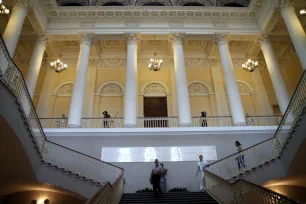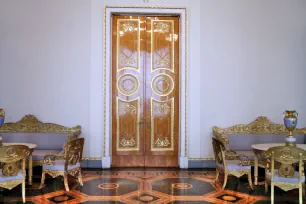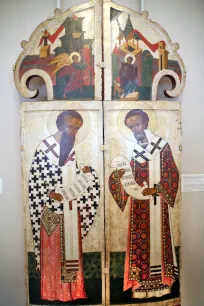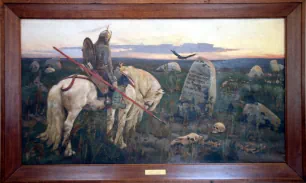St. Petersburg’s Russian Museum was established in the late nineteenth century by Emperor Nicholas II as the first state museum of Russian fine art. Most of its vast collection is displayed in the Mikhailovsky Palace.
The Museum




In 1895, Tsar Nicholas recognized the need for a public art exhibit that would bring regional masterpieces to the people of Russia. Choosing the Mikhailovsky Palace to house the museum, the tsar gathered a variety of genres at the museum, including oil painting, sculpture, graphic art, decorative and applied art. The original collection numbered 445 pieces, most of them coming from the Hermitage Museum, the Royal Palaces and the Academy of Arts Museum.
The museum collection continued to acquire items from the Academy of Arts, and after the Revolution important pieces from palaces and private collections also moved to the Russian Museum. Today, there’s 400,000 works in the permanent collection, covering the entire history of Russian fine art.
The museum also currently serves as the coordinating center for all art museums in Russia and has been extended to include three more palaces in St. Petersburg – the Stroganov Palace, Marble Palace and St Michael’s Castle.
Mikhailovsky Palace
The Mikhailovsky Palace was built for the Grand Duke Mikhail Pavlovich, the younger brother of tsar Alexander I. It was constructed to the design of Carlo Rossi between 1819 and 1825 and is considered a masterpiece of Russian Neoclassical architecture. The palace was acquired by the crown in 1895 and the interior was renovated in order to accommodate the museum.
Most of the original exterior design of the palace is still intact. A wide staircase flanked by lion statues leads to the large portico with eight Corinthian columns that dominates the front facade of the building. The interior, however, has undergone more drastic changes, with only the Main Staircase and the grand White Hall retaining Rossi’s original design. The White Hall even has the original furniture in place.

Museum Collection
The collection of the museum is arranged in chronological order. The oldest part of the collection, pre-dating Peter the Great, consists of mostly icons with religious subjects such as the fifteenth century St. George and the Dragon.
After Peter the Great came to power, he wanted to steer the arts in a new direction, and Russian art became heavily influenced by Western art movements after the tsar invited foreign painters to come and work in Russia.


The subjects of the paintings became more diverse and the depictions more lively. Portraits, which were even banned by the Orthodox Church before Peter the Great became popular, with Ivan Nikitin, Andrey Matveyev and Dmitry Levitzky as the main exponents. Several rooms in the museum are devoted to these portraits.
A highlight of the museum are the paintings from a group known as the Wanderers, who in 1863 rebelled against the conservative Academy of Arts and wanted painters to become more socially relevant.
Their paintings had typical Russian subjects and often show common people on the countryside. Ilya Repin, the most famous of the Wanderers, is represented with the ‘Barge-Haulers on the Wolga’.
The museum also has an impressive collection of twentieth-century artwork, with works from internationally acclaimed avant-garde artists such as Kazimir Malevich, Ravel Filonov and Vasily Kandinsky.

